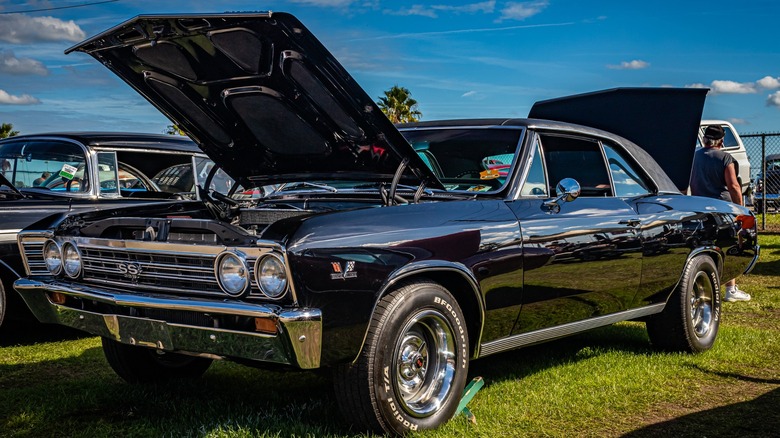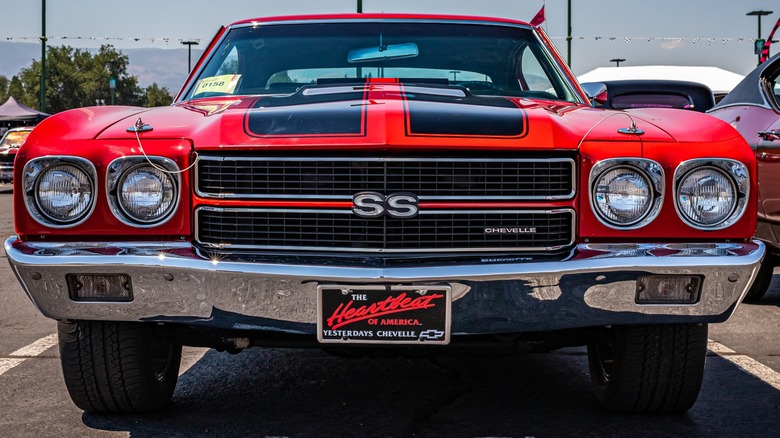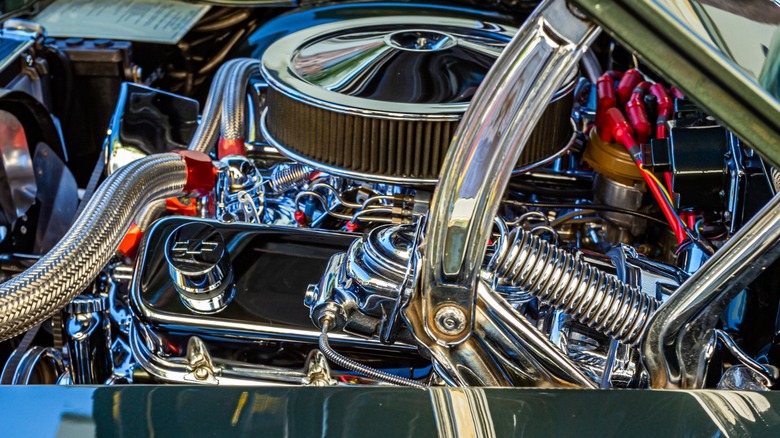How Much Horsepower Does A Chevrolet Chevelle Malibu SS 396 Have & How Fast Is It?
Chevrolet introduced the world to the first-generation Chevelle in 1964 with two trim levels, 300 and Malibu, not knowing it would become one of the most impressive muscle cars of all time. A bevy of engines powered the early first-gen Chevelle Malibu, including some of the best Chevy muscle car engines, such as a 220-horsepower 283 cubic-inch V8 with 295 lb-ft of torque and the "Mighty Mouse," a 300 horsepower 327 cubic-inch V8 with 360 lb-ft of torque.
In its second year of production, Chevrolet began installing the L37 396 cubic-inch big block into the midsize Chevelle Malibu Super Sport as part of the Z16 Package. The 1965 Chevelle Malibu SS 396 L37 was rated at 375 horsepower and 420 lb-ft of torque. The cast iron Z16 396 big-block featured an aggressive hydraulic camshaft, oversized valves, and an aluminum alloy dual-plane intake manifold. This allowed the 780-cfm four-barrel Holley carburetor to deliver its fuel rich mixture to the engine's cavernous combustion chambers before compressing the blend at a ratio of 11:1.
How fast is a Chevrolet Chevelle Malibu 396 SS?
In 1965, a Chevy Chevelle Malibu SS 396 weighed around 3,700 pounds and rolled on 7.75-14 two-ply tires mounted on 6-inch-wide steel wheels. The Z16 Package provided the stiffer boxed steel frame normally found on the convertible Chevelle, a wide-ratio Muncie M20 four-speed manual transmission, and a 12-bolt rear-end with a 3.31:1 gear ratio open differential. With the only traction control being judicious throttle control, the 1965 Chevelle Malibu SS could cover a standing quarter mile with times in the mid-14-second range at nearly 100 mph on a good day.
Second generation Chevelle encompass model years from 1968 to 1972. The new model quickly received a mid-generation redesign in 1970 that included an option for the 454 big-block in the SS, like the one Tom Cruise drove in the 2012 movie "Jack Reacher."
In an article covering the 1969 Chevelle 396 SS, MotorTrend reports it received the same 375 horsepower rating as the first-gen's L37 but had less torque at 415 lb-ft. Still, the stock 1969 L78 Chevelle 396 SS recorded a 14.07 second quarter mile at 101 mph during testing. Other tests found an otherwise stock 1968 Chevelle 396 SS could get into the low 13-second range with racing slicks, a better four-speed shifter with improved linkage, and exhaust headers with improved flow.
What happened to the Chevelle 396 SS?
By 1970, Chevrolet had bored the 396 big block's cylinders out to 4.126 inches from the original 4.094-inch diameter and kept the 3.76-inch crankshaft stroke. Technically that increased the 396's displacement to 402 cubic inches, but given the popularity of the 396, the numbered badge remained the same with the familiar 396 SS. Despite the increased displacement, the 1970 L78 396 retained the same power ratings as the actual 396 from 1969.
With a "Go Big or Go Home" attitude, the more powerful 454 big-block had muscled out the 396 as the premier Chevelle SS engine offering by 1971. This left the 396 operating as a detuned version with 8.5:1 compression and a paltry 300 horsepower compared to its glory days. By 1972, the final year for the 396, or 402 depending on its application, horsepower was down to 240 in dual-exhaust equipped cars and 210 for those with more restrictive single exhaust systems.


